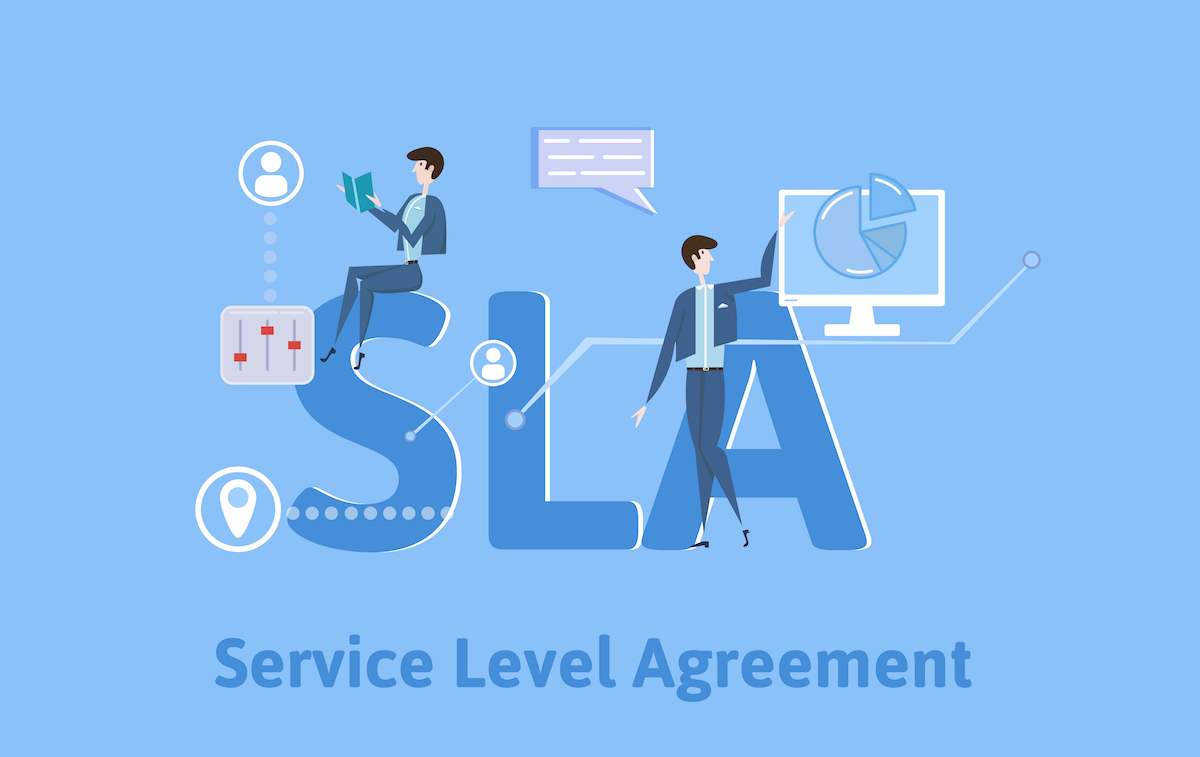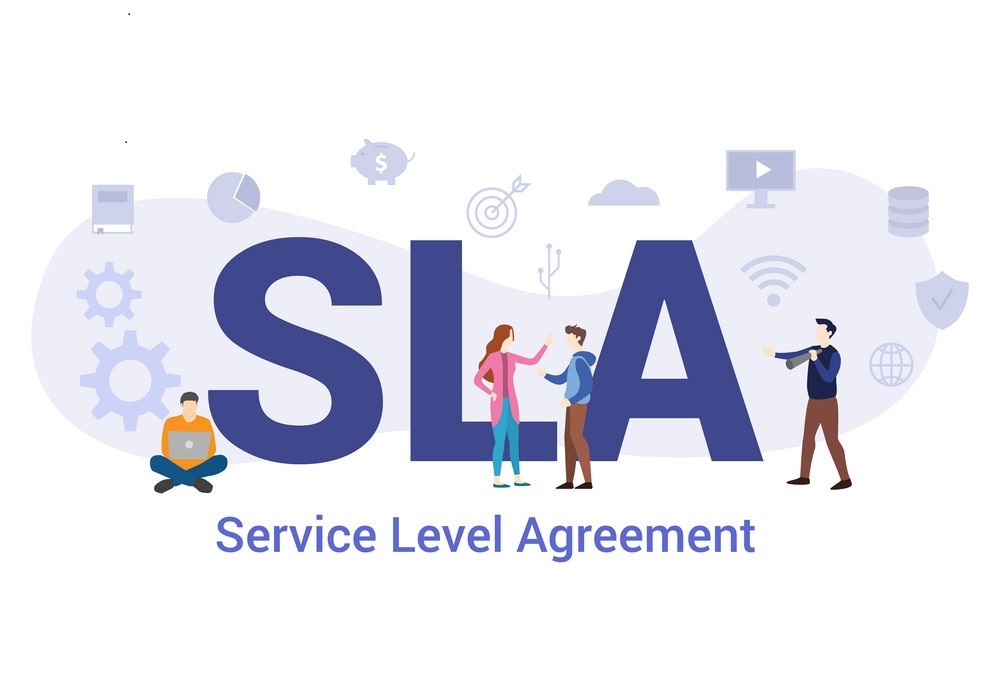A Service Level Agreement (SLA) is a legally binding contract between a service provider and a client that outlines the agreed-upon level of service, expectations, and responsibilities. In the context of UK English and aligned with the laws of England and Wales, crafting a robust SLA is crucial for ensuring clarity, accountability, and the smooth delivery of services. Below is an expert guide outlining key components and considerations when drafting a standard SLA.
Introduction and Definitions
Begin the SLA with a clear introduction outlining the parties involved, the nature of the services provided, and the purpose of the agreement. Define essential terms and terminology used throughout the document to prevent misunderstandings.

Scope of Services
Define the scope of services covered by the SLA, including specific deliverables, performance metrics, and service boundaries. Clearly outline what is included in the services provided and any exclusions or limitations.
Service Level Objectives (SLOs)
Establish measurable service level objectives (SLOs) that define the quality and performance standards expected from the service provider. SLOs may include response times, resolution times, uptime guarantees, and other key performance indicators relevant to the services provided.
Responsibilities of Parties
Clearly delineate the responsibilities of both the service provider and the client. This includes obligations related to communication, cooperation, access to resources, data protection, and compliance with relevant laws and regulations.
Performance Monitoring and Reporting
Specify the methods and frequency of performance monitoring and reporting. Define how performance metrics will be measured, reported, and reviewed, and outline procedures for addressing performance issues or discrepancies.
Change Management
Outline procedures for managing changes to the services, including modifications to service levels, scope, or pricing. Define how changes will be requested, assessed, approved, and implemented, ensuring transparency and accountability.
Escalation Procedures
Establish escalation procedures for resolving disputes, issues, or breaches of the SLA. Define levels of escalation, responsible parties, and timeframes for resolution, ensuring a clear and effective process for addressing concerns.
Termination and Exit Strategy
Include provisions for terminating the SLA, including reasons for termination, notice periods, and procedures for transitioning services to another provider or returning assets. Define exit obligations, such as data handover, intellectual property rights, and confidentiality.
Governing Law and Jurisdiction
Specify the governing law and jurisdiction applicable to the SLA, ensuring alignment with the laws of England and Wales. This ensures clarity and certainty regarding legal rights, obligations, and dispute resolution procedures.
Review and Amendment
Include provisions for reviewing and amending the SLA periodically to reflect changes in business requirements, technology, or regulations. Define the process for initiating, conducting, and documenting SLA reviews and amendments to ensure ongoing relevance and effectiveness.
Conclusion
A well-crafted Service Level Agreement is essential for establishing clear expectations, accountability, and mutual understanding between service providers and clients. By incorporating these key components and considerations aligned with UK English and the laws of England and Wales, organisations can effectively manage service delivery and mitigate risks associated with service provision.
What is a Service Level Agreement (SLA), and why is it important?
An SLA is a contractual agreement between a service provider and a client that outlines the level of service expected, performance metrics, and responsibilities. It’s crucial for setting clear expectations, ensuring accountability, and maintaining quality service delivery.
What are the key components of a standard SLA?
Key components include the scope of services, service level objectives (SLOs), responsibilities of parties, performance monitoring and reporting, change management procedures, escalation procedures, termination and exit strategy, governing law and jurisdiction, and review and amendment processes.
How do I determine the appropriate service level objectives (SLOs) for my SLA?
SLOs should be based on the specific needs and priorities of the service being provided. Consider factors such as customer expectations, industry standards, technical capabilities, and regulatory requirements when defining SLOs.
What happens if the service provider fails to meet the agreed-upon service levels?
The SLA should include provisions for addressing performance issues, such as penalties, service credits, or remedies. Escalation procedures should be defined for resolving disputes or breaches of the SLA.
Can a standard SLA be tailored to suit specific business requirements?
Yes, a standard SLA template can be adapted to accommodate the unique needs and preferences of the parties involved. It’s essential to ensure that any modifications align with legal requirements and maintain clarity and fairness for both parties.
How often should an SLA be reviewed and updated?
SLAs should be reviewed periodically to ensure they remain relevant and effective. The frequency of reviews may vary depending on factors such as changes in business requirements, technology, regulations, or performance trends.
Are there any legal considerations to keep in mind when drafting an SLA?
Yes, when drafting an SLA, it’s essential to consider legal requirements, such as data protection regulations, intellectual property rights, confidentiality agreements, and compliance with applicable laws and standards.
Can an SLA be terminated before the end of the agreed-upon term?
Yes, SLAs typically include provisions for termination under certain circumstances, such as breach of contract, non-performance, or mutual agreement between the parties. Termination procedures and notice periods should be clearly defined in the SLA.
How can I ensure effective communication and collaboration between parties under an SLA?
Clearly define communication channels, points of contact, and escalation procedures in the SLA. Regular meetings, performance reviews, and feedback sessions can also help foster collaboration and address any issues proactively.
Where can I find templates or resources to help me draft an SLA?
Various online resources, professional organisations, and legal firms offer templates, guidelines, and best practices for drafting SLAs. It’s advisable to consult with legal professionals or solicitors specialised in contract law to ensure compliance and accuracy.
- Press Release – Product Update Announcement - July 19, 2024
- Press Release – New Service Announcement - July 19, 2024
- Press Release – Company Contract Award - July 18, 2024









